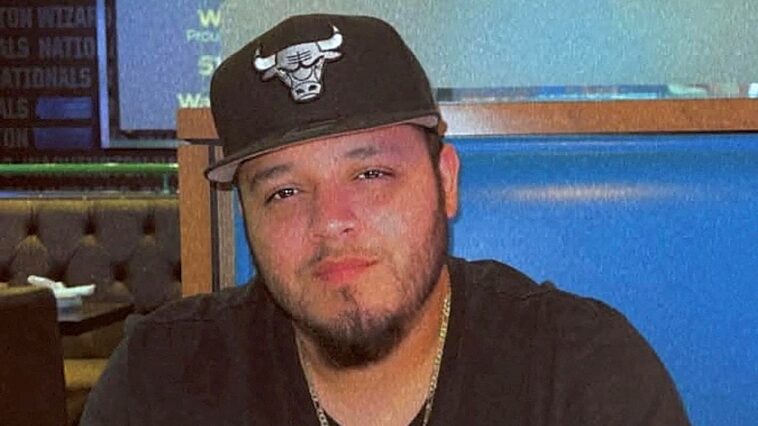A Department of Justice lawyer announced in a Maryland Federal courtroom on Monday that Kilmar Abrego Garcia could face deportation from the U.S. government if he is released from jail before his human smuggling trial in Tennessee commences. This revelation seems to contradict previous assertions made by representatives from both the Justice Department and the White House, who had previously indicated that Garcia would undergo trial and might serve jail time in the United States prior to any deportation procedures.
According to these statements, Garcia was expected to remain within the United States’ judicial system and serve any penalties designated by the American court of law before being subjected to any deportation actions. However, the latest statement from the Department of Justice lawyer clarifies that the actual intention is to initiate deportation immediately if Garcia is released from custody before his trial.
That disclosure was made amid a federal court hearing in Maryland, where Garcia’s American spouse is currently battling the administration via a lawsuit. The purpose of the suit is two-pronged: challenging the wrongful deportation of Garcia in March and to prevent his future expulsion from the United States.
The attorney unveiled plans that the U.S. Immigrations and Customs Enforcement (ICE) would detain Garcia immediately upon release from jail. Further, plans were in motion to transfer Garcia to a ‘third country’ other than his native land of El Salvador, although the specific destination has yet to be divulged.
U.S. District Judge Paula Xinis expressed the complex nature of figuring out what the future holds for Garcia. Consequently, an upcoming hearing was scheduled for Thursday, where U.S. officials are expected to offer clarity on possible scenarios should Garcia gain release.
Garcia’s case garnered significant attention due to its ties with the immigration policies of former President Donald Trump. Garcia was subjected to deportation to El Salvador, his homeland, in March and was held in a notorious ‘megaprison’. The administration falsely associated him with gang activities, despite Garcia never been legally charged with any crime, strongly refuting the accusations. This deportation happened against a previous directive from a U.S. immigration judge, who in 2019 ordered that Garcia not be sent back to his native country due to perceived threats from local gangs.
The immigration judge made the decision based on evidence provided by Garcia, who claimed that local gangs had terrorized him and his family, forcing him to flee El Salvador for the United States. As such, Judge Xinis saw it fit to protect Garcia from being extradited back to his country while under the U.S.’s jurisdiction. This decision was later overruled leading to his deportation.
A landmark moment occurred when Abrego Garcia was returned to the United States last month to answer federal allegations of human smuggling, due in part to mounting pressure and subsequent orders by the Supreme Court. The allegations emerged from a situation in 2022 where Garcia was stopped for overspeeding in Tennessee. At the time, Garcia was at the helm of a vehicle carrying nine other individuals with conspicuously lowluggage.
Upon his return to the U.S. and during the initial stages of the current legal proceedings, Garcia pleaded not guilty to the charges levelled. His legal representatives argued that government witnesses who testified against him were likely incentivized with positive adjustments to their immigration statuses.
Furthermore, Garcia’s lawyers accused the authorities of deliberately extraditing him back to the U.S. with a planned agenda of deporting him again before he can make his defense against the human smuggling charges at trial. They suggested an ulterior motive behind his repatriation to the U.S., which would deny him his right to a fair trial.
In an interesting development, a Nashville Federal Judge had considered releasing Garcia, having determined that he posed neither a threat nor a flight risk. However, the judge only kept Garcia in custody after his attorneys showed anxiety that the U.S. could fast-track his deporting procedure without granting him a full trial.
Consequently, Garcia’s attorneys pleaded with the U.S. government to have Garcia transferred to Maryland, should a decision to release him be reached. The desired move would effectively prevent his immediate deportation, allowing him the rightful chance to defend himself at trial. Garcia has been a Maryland resident for over ten years, working in construction and nurturing his family.
Authorities are yet to respond to the latter request concerning Garcia’s relocation to Maryland if released. In parallel, efforts by the government to dismiss the pending lawsuit regarding Garcia’s initial wrongful deportation were unsuccessful. The government’s argument was essentially that since Garcia had been returned to U.S. soil, the case against his deportation was rendered pointless, a point of contention which the presiding judge rejected.
According to the judge, returning Garcia to the U.S. does not conclusively close the matter as the government suggested. From the judge’s perspective, the ‘controversy’ surrounding Garcia’s situation remains alive, even with Garcia back on American soil, thus necessitating the continuation of the litigation.
In closing, Garcia’s case continues to spread waves through the American judicial system, with further developments eagerly anticipated. The imminent ruling on his potential release and the corresponding fate of his deportation will no doubt cast further light on the complexities of immigration law in the United States.

